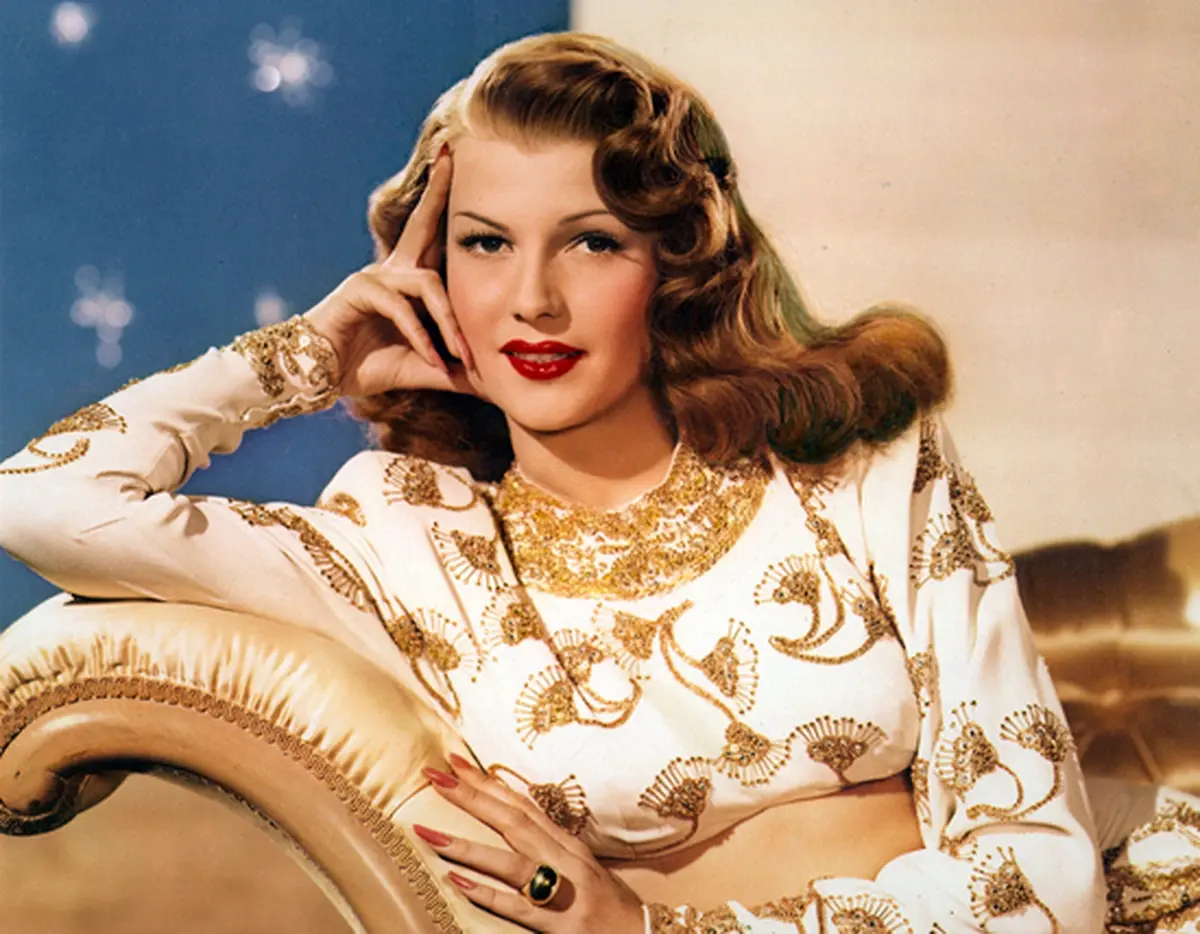 Rita Hayworth, the erotic symbol of America, was born Margarita Carmen Cansino to a Spanish dancer of Romani descent. She adopted her mother’s surname, Hayworth, for her acting career and became a sensation after starring in the romantic drama “Gilda.” In a nod to the actress, American soldiers named a nuclear weapon tested in 1946 after her iconic role, dubbing it “Gilda.” The Hollywood star, who was later recognized by the American Film Institute as one of the greatest movie stars of all time, was first labeled a “sex bomb.” As we celebrate her birthday, let’s reflect on the life and films of Rita Hayworth—a talented dancer and captivating woman who had wealth, admirers, and five marriages, yet never truly experienced love.
Rita Hayworth, the erotic symbol of America, was born Margarita Carmen Cansino to a Spanish dancer of Romani descent. She adopted her mother’s surname, Hayworth, for her acting career and became a sensation after starring in the romantic drama “Gilda.” In a nod to the actress, American soldiers named a nuclear weapon tested in 1946 after her iconic role, dubbing it “Gilda.” The Hollywood star, who was later recognized by the American Film Institute as one of the greatest movie stars of all time, was first labeled a “sex bomb.” As we celebrate her birthday, let’s reflect on the life and films of Rita Hayworth—a talented dancer and captivating woman who had wealth, admirers, and five marriages, yet never truly experienced love.
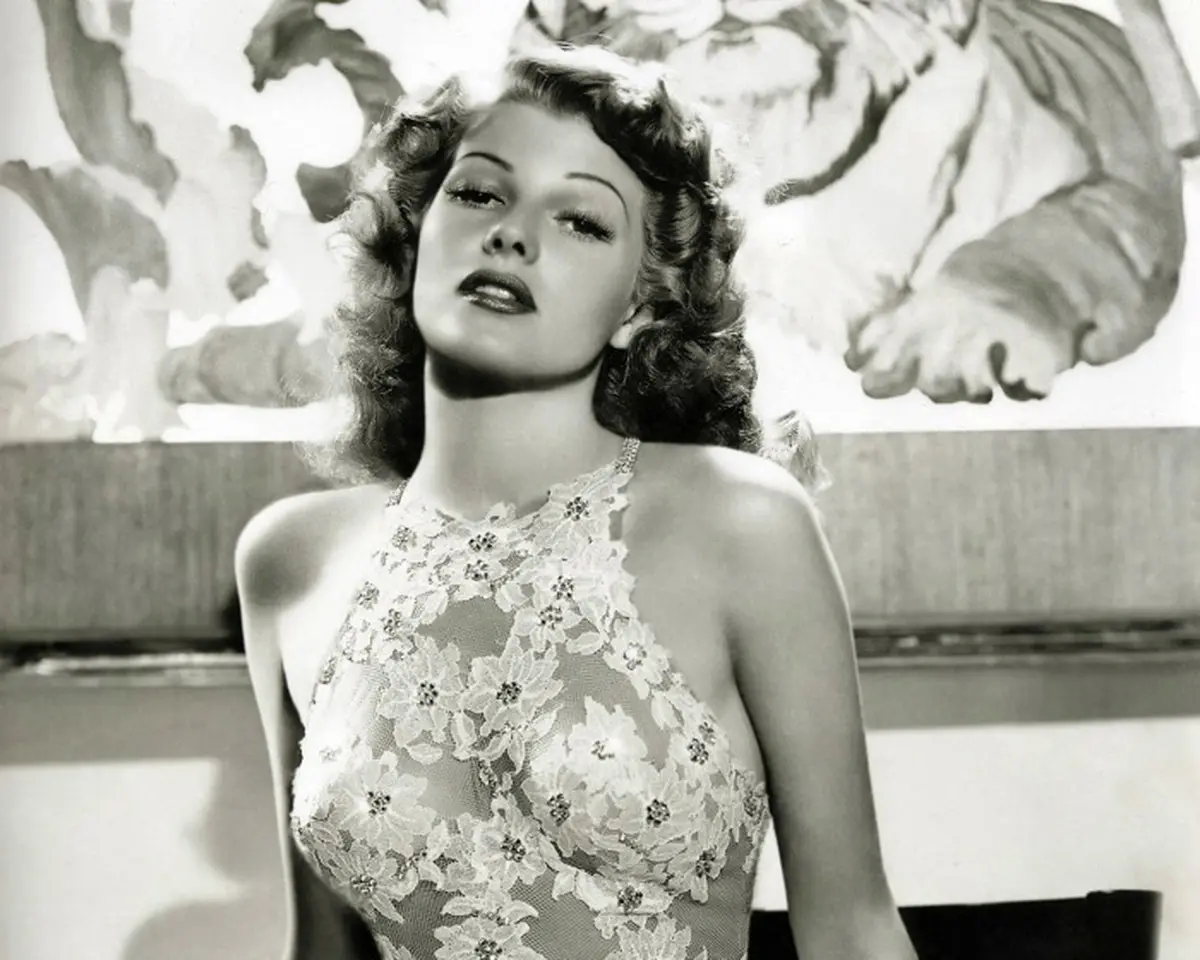
Dance School
The future star was born on October 17, 1918, in New York City, the birthplace of musicals. The family from Brooklyn raised two sons, but the father’s attention was focused on his daughter, whom Eduardo Cansino, a flamenco dancer from Seville, immediately saw as his future dance partner. From the age of three, he taught her to move gracefully on the dance floor, while her mother, Volga Hayworth, a chorus girl of half-Irish and half-English descent, dreamed of an acting career for her daughter. Rita managed to fulfill both expectations. Although Margarita Carmen disliked the dance exercises that stole her childhood, it was the dance school that provided her education, leading the young dancer to the film industry by the age of eight.
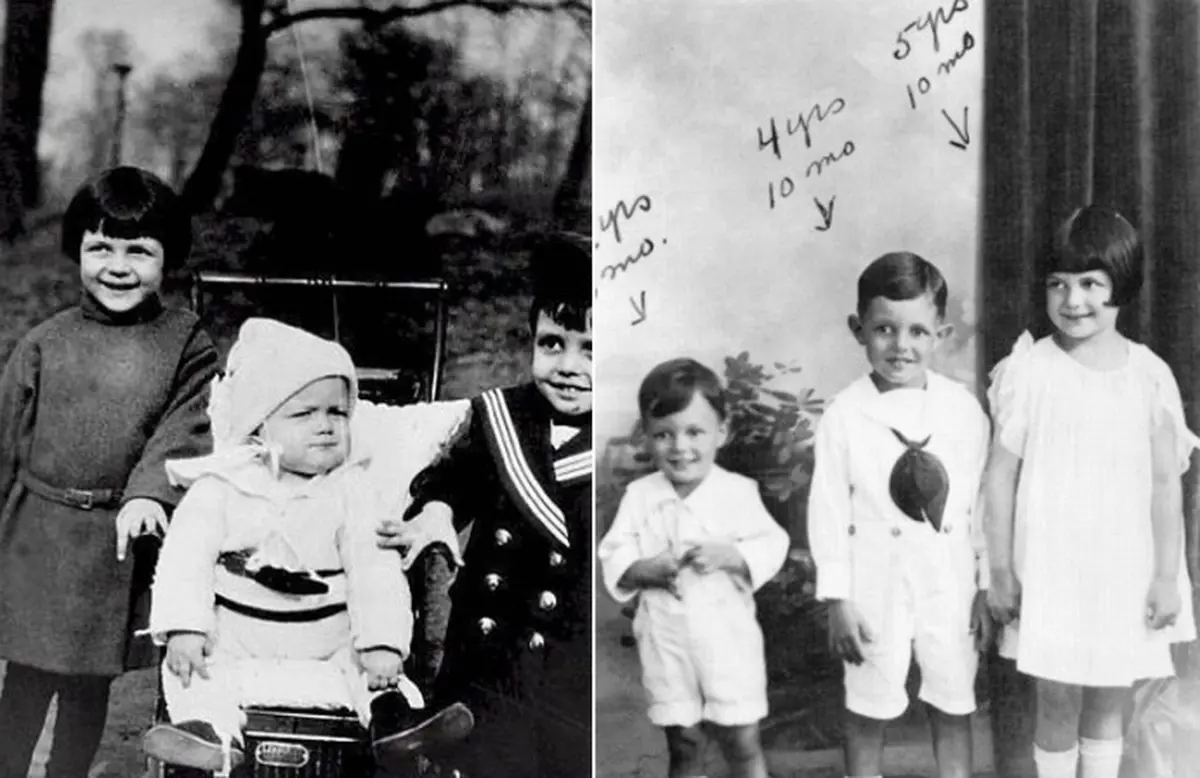
Little Rita with her brothers
The young performer made her film debut in 1926 in “La Fiesta,” and the following year, the family moved to Hollywood. There, her father opened a dance studio, where he taught stars like Jean Harlow and James Cagney among the chorus girls. During the Great Depression, that business closed, and the family had to earn a living through joint performances. After her early film debut, the underage nymph danced the habanera in Mexican nightclubs for another ten years, enhancing her “Latin” features with hair dyed according to her impresario’s suggestions. The audience believed she was of Mexican descent, and it was as an exotic dancer that 17-year-old Rita starred in her first films under contract with Fox.
Labeled a “Failure”
It wasn’t until her fourth film that the Spanish-American actress spoke on screen, revealing her complete lack of the expected Latin accent. Soon after, the studio, which had changed its name to 20th Century Fox, was taken over by new head Darryl Zanuck, who ordered all scenes featuring the young actress cut from the newly edited 1936 film “The Garcia Letter,” calling her a “failure.” Interestingly, experts continued to deny the star any acting talent, recognizing only her feminine allure, which was enough for her films to succeed. Moreover, she had a knack for finding resourceful men who helped her in life and career.
Rita Hayworth’s first husband, a year after her setback with 20th Century Fox, was Edward Charles Judson, a car salesman with a reputation as Hollywood’s Monte Cristo. Rumor had it that his legitimate business was merely a front, and no one knew how he truly amassed his fortune. He transformed Margarita Carmen Cansino into Rita Hayworth, convincing her to adopt her mother’s maiden name for work and fulfilling his promise to open doors for her at Columbia Pictures. To realize his ambitious plan, Ed Judson paid for acting lessons, ordered her to dye her hair red, lighten it, and then remove excess hair from her forehead through electrolysis, and even change the shape of her nose for her new image.
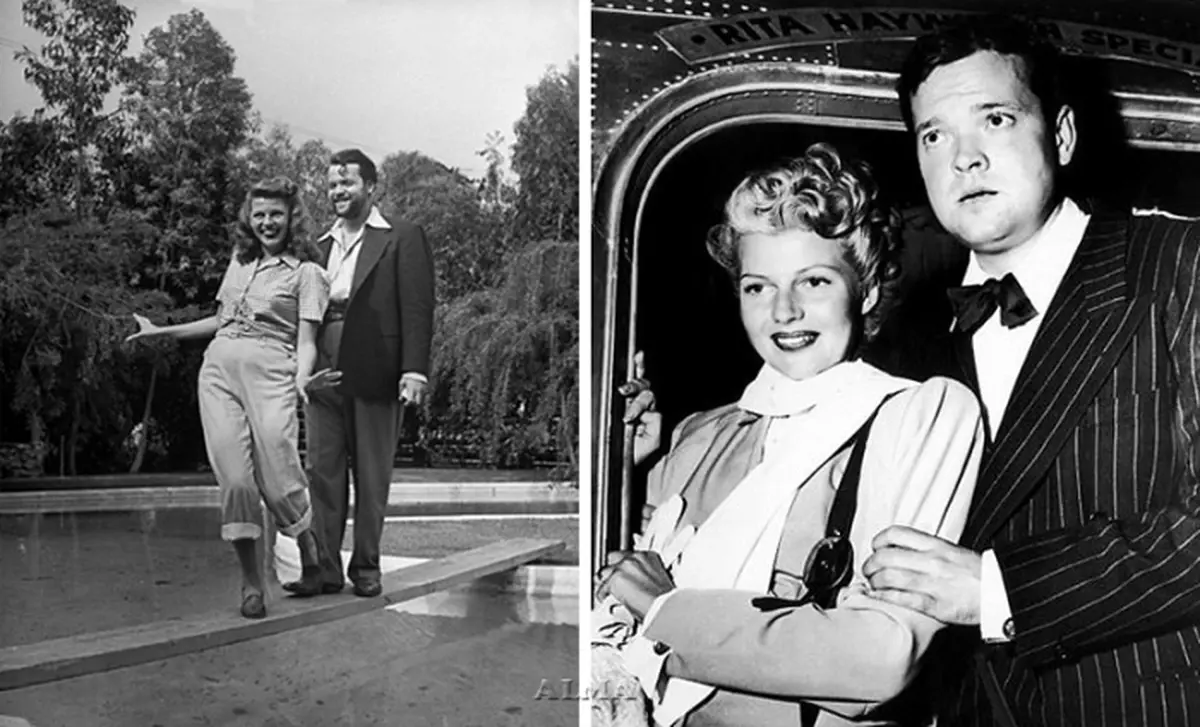
Eddie Judson and Rita Hayworth
The Birth of a Star
The aesthetic transformations lasted over a year, involving renowned plastic surgeon Joel Pressman. The golden-haired Rita Hayworth was born after weekly interventions that raised her hairline nearly two centimeters to refine her forehead. The facial metamorphoses increased the actress’s chances of landing roles, but initially, they were low-budget films where Rita appeared three to four times a year, making little impression on audiences or critics. The name Hayworth first appeared in the credits of the mediocre detective film “The Shadow” in 1937, after which director Howard Hawks cast her in “Only Angels Have Wings.”
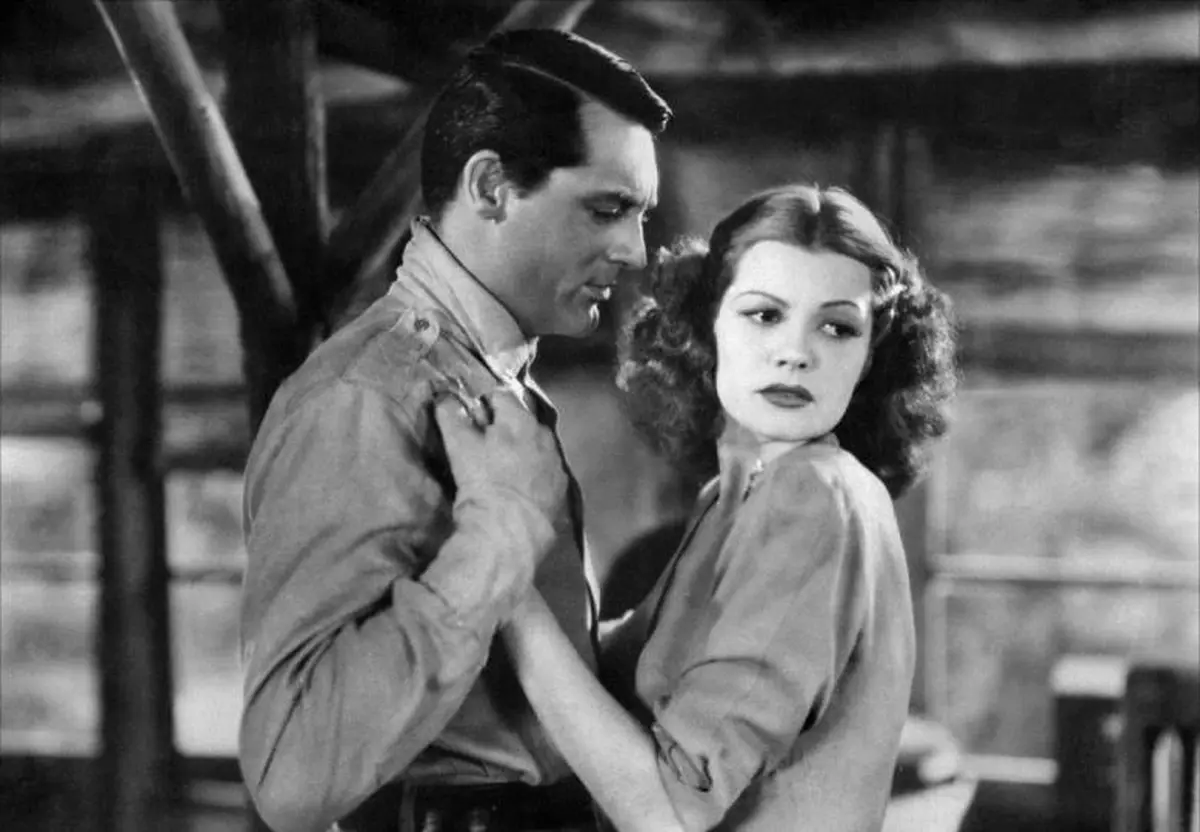
Scene from the film ‘Only Angels Have Wings’
Her role as “the other woman” in the 1939 film about mail pilots in South America, along with Rita Hayworth’s work in “Angels Over Broadway” and “Music in My Heart,” allowed Columbia Pictures president Harry Cohn to promote the promising actress to “A” projects and rent her out to other studios, as was customary in Hollywood. Thus, her next employers included Metro-Goldwyn-Mayer (in 1940, Rita Hayworth starred in “Susan and God”) and 20th Century Fox (in the 1941 color melodrama “Blood and Sand,” producer Darryl Zanuck rediscovered the actress, who he had previously underestimated, thanks to favorable reviews from critics).
The Cover Girl
The new star returned to the familiar studios of 20th Century Fox as a beloved figure. In 1941, a photo of Rita Hayworth in a semi-nude pose graced the cover of the prestigious magazine Life, setting a new publishing trend. Actor, dancer, choreographer, and singer Fred Astaire chose Rita Hayworth as his partner for the musicals “You Were Never Lovelier” and “You’ll Never Get Rich” in 1941-1942. The master called his new partner an unparalleled dancer and an incomparable seductress, but the “cover girl” herself did not see herself as a femme fatale and was upset that she could not sing (it was a secret that her vocal numbers were dubbed by other actresses).
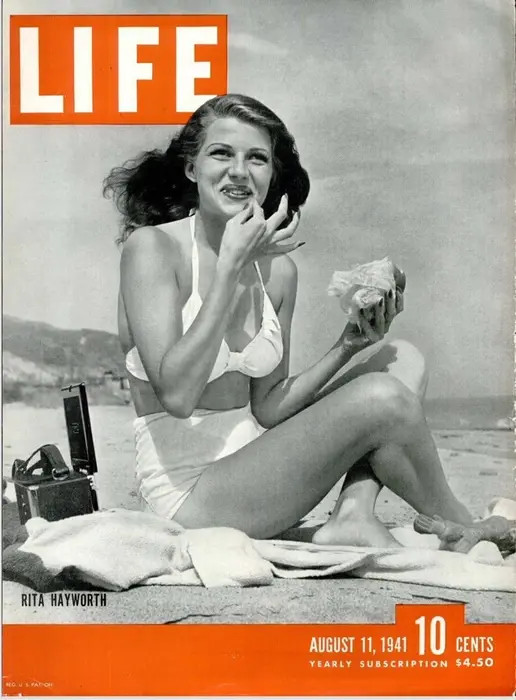
Despite everything, the studio hurried to prepare new productions for the rising star— the costume musical “My Gal Sal” and the epic drama “Legends of Manhattan.” This work impacted Rita Hayworth’s personal life— in 1942, the actress divorced Ed Judson to marry her co-star from “My Gal Sal,” Victor Mature. However, those plans were thwarted by an unexpected rival. That rival was Orson Welles, the creator of the groundbreaking 1938 radio adaptation of H.G. Wells’ novel “The War of the Worlds,” an American director, screenwriter, actor, and producer. After seeing Rita Hayworth in “Blood and Sand,” he rushed to declare his love for her that very day.
“First-Class Trash”
The improvisation and pressure paid off: in 1943, the star married Orson Welles, and a year later, her second color musical, titled “Cover Girl,” was released (her partner in this film was the renowned Hollywood dancer Gene Kelly). The next project, “Tonight and Every Night,” about a London music hall that remained open even during Hitler’s bombings, became another significant milestone in the star’s filmography. All that remained was to wait for the end of World War II and star in the melodrama “Gilda,” which would etch her name in the history of American cinema in golden letters, despite critics justifiably labeling the film with its nonsensical script as “first-class trash.”
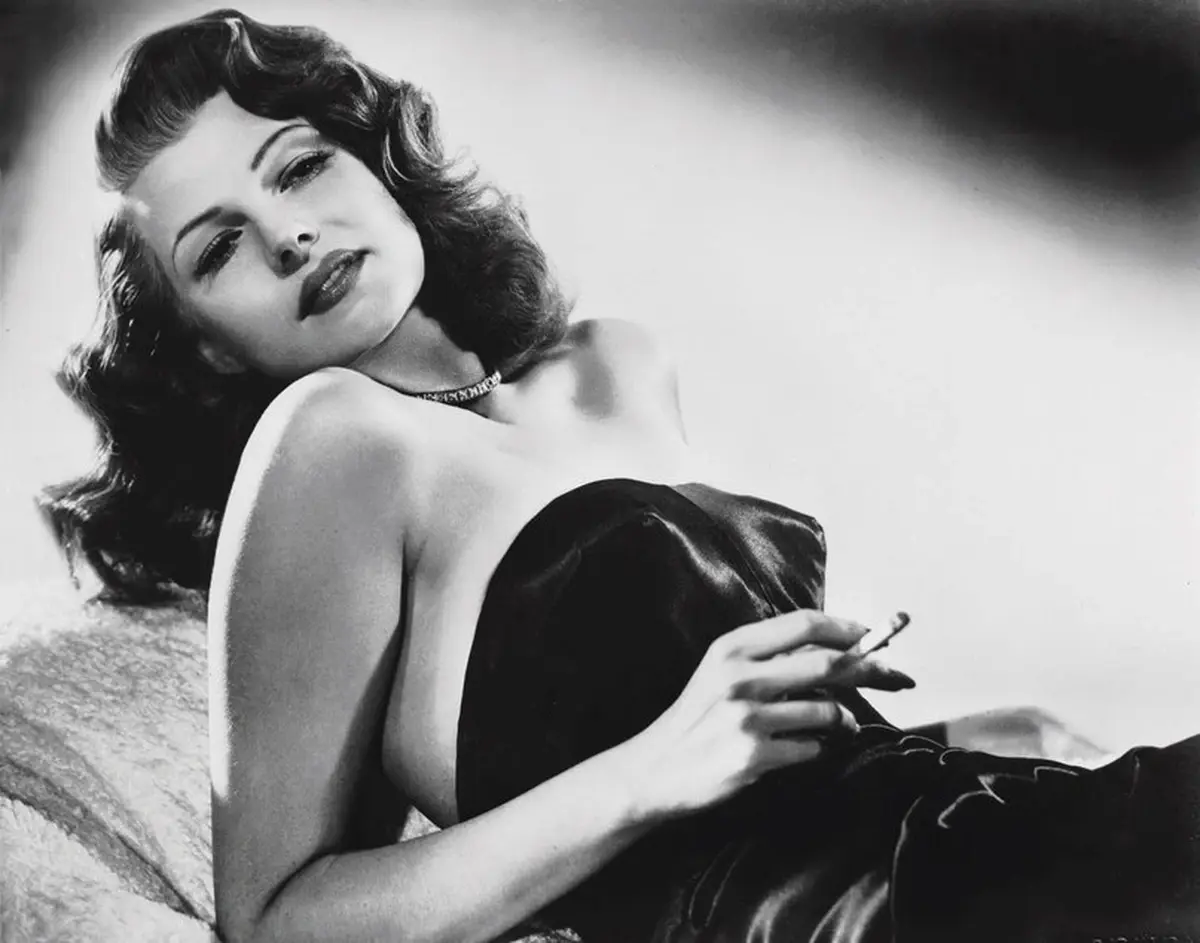
Rita Hayworth in the melodrama ‘Gilda’
Yet even in “trash,” audiences noticed the glimmer of gold: no one was indifferent to the iconic scene where Rita Hayworth seductively removes her glove. The exquisitely performed moment was dubbed a “striptease,” and the actress was recognized as a sex symbol, with the atomic bomb named after her character. However, the “goddess of love” was not thrilled with this unapproved decision and even considered protesting, but her husband dissuaded her from taking an impulsive step that could be seen as unpatriotic. Unlike the deadly weapon, the “sex bomb” gave birth to her first daughter, Rebecca, and divorced her father after five years of a seemingly happy marriage. Ironically, the divorce brought the former couple back together on screen.
Gave Birth to a Princess
The actors first appeared together in the 1948 film “The Lady from Shanghai.” The new look of the platinum blonde did not please fans of her previous image, and the film flopped at the box office, plunging the actress into a deep creative crisis. In that state, disillusioned with acting, she quickly remarried, even though Rita Hayworth’s ex-husband continued to harbor romantic feelings for her after their divorce. Rita’s third husband was Prince Ali Khan, the son of the Sultan and world-renowned Islamic leader Aga Khan III. The star met the millionaire playboy during her first trip to Europe—they met in 1948 on the French Riviera.
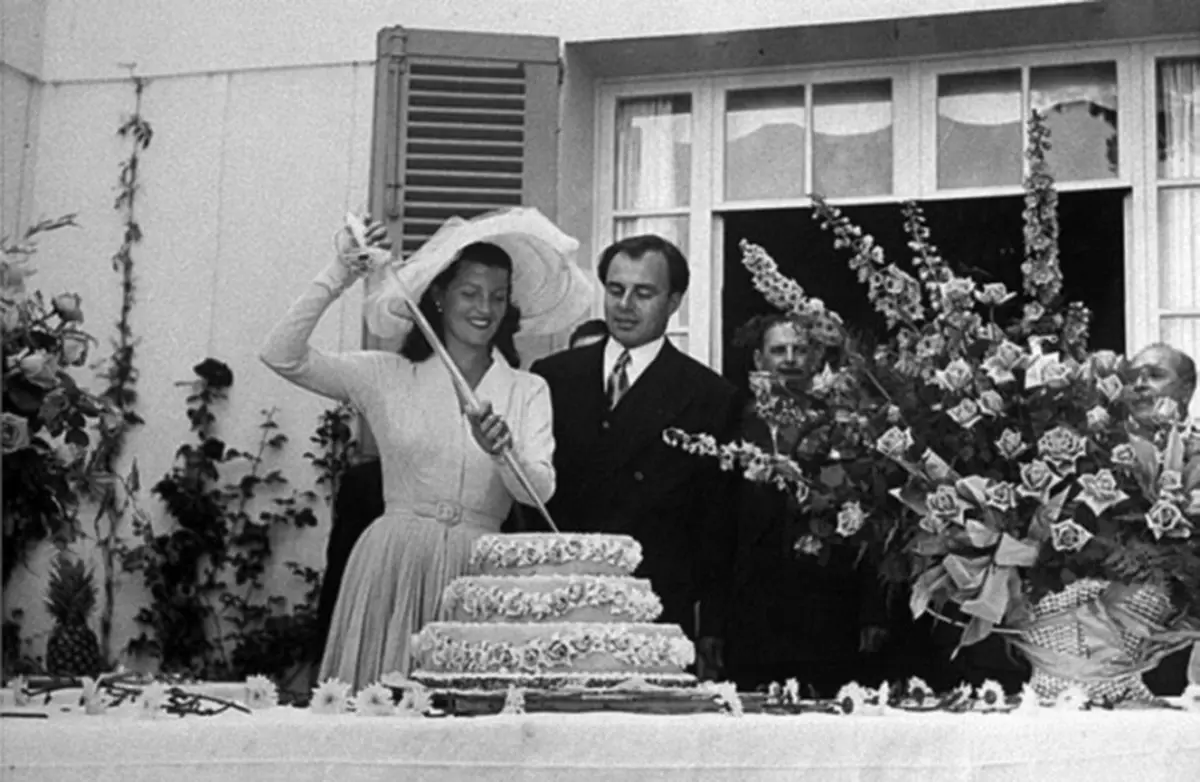
Rita Hayworth and Ali Khan
At that time, the new love of the American actress was still married, but public disapproval did not deter the couple, who did not hide from reporters. Rita returned to Hollywood only to break her contract with the studio. For this decision, the star had to pay a penalty of a quarter of a million dollars. Rita Hayworth’s ex-husband, Orson Welles, commented on the situation: “The position that others could only dream of brought Rita no joy. She despised her heroines and did not like being Rita Hayworth.” In her desire to start a new life far from Hollywood, Rita left without regret to live in another country, where she gave birth to her second daughter, Princess Yasmin Aga Khan, in 1949.
“A Decade of Hell”
However, each of the star’s marriages lasted no more than five years. The specific lifestyle (possible marital infidelity) and Ali Khan’s obligations were hard for the American wife to accept, and she struggled to learn French. The divorce from the prince occurred in 1953, and as was customary, the woman plunged into her next marriage that same year. Rita Hayworth’s fourth husband was American actor and singer Dick Haymes, with whom she divorced just two years later. Rita’s last husband from 1958 to 1961 was producer James Hill, and her farewell success was her collaboration with in “The Joey Bishop Show.” In her later years, Rita Hayworth was left with alcohol, a psychoanalyst, and Alzheimer’s disease.
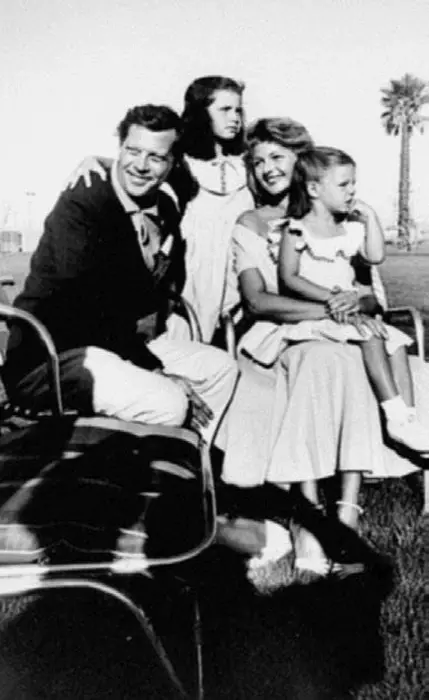
Rita Hayworth, Dick Haymes, Rebecca Wells, and Yasmin Khan
While filming the 1972 movie “The Wrath of God,” the actress needed help with every line. By 1981, the star’s condition had deteriorated so much that the Los Angeles Superior Court declared her incompetent to care for herself and appointed her daughter Yasmin as her guardian, who took care of her mother in her final years. “It was two decades of hell,” the guardian said of Rita Hayworth’s illness. The sex bomb #1 passed away in her Manhattan apartment in May 1987, but by that time, she likely no longer remembered what a seductive woman she once was, whom she inspired, and what love she longed for but could not hold onto or simply never found…
Photo from open sources
